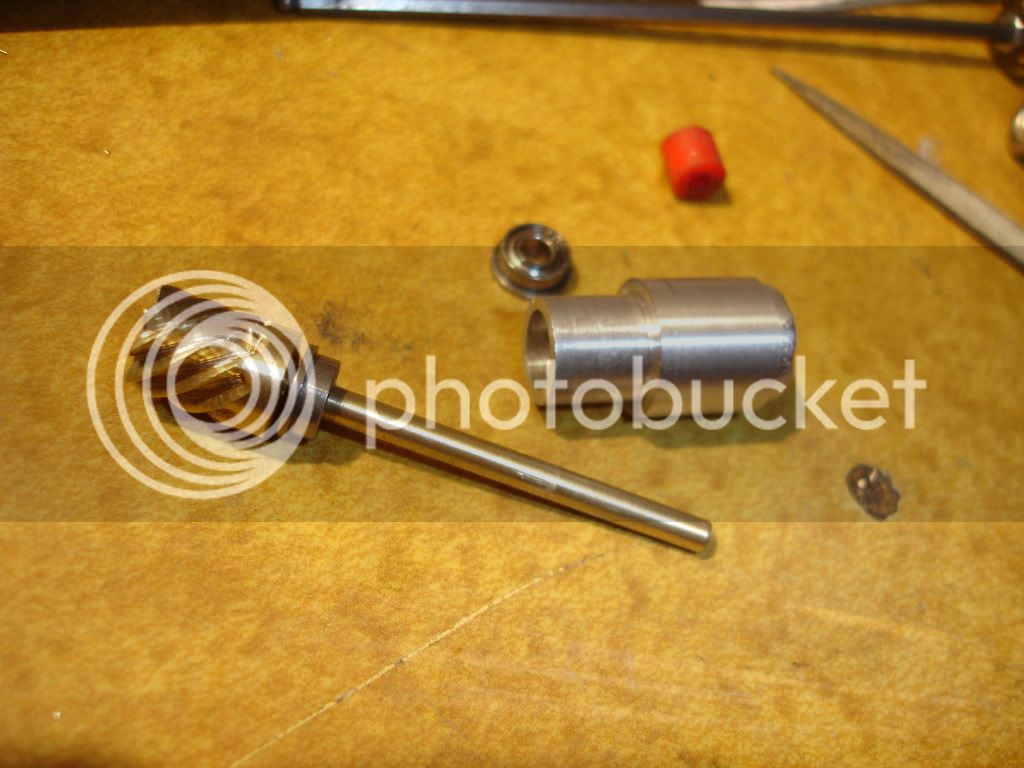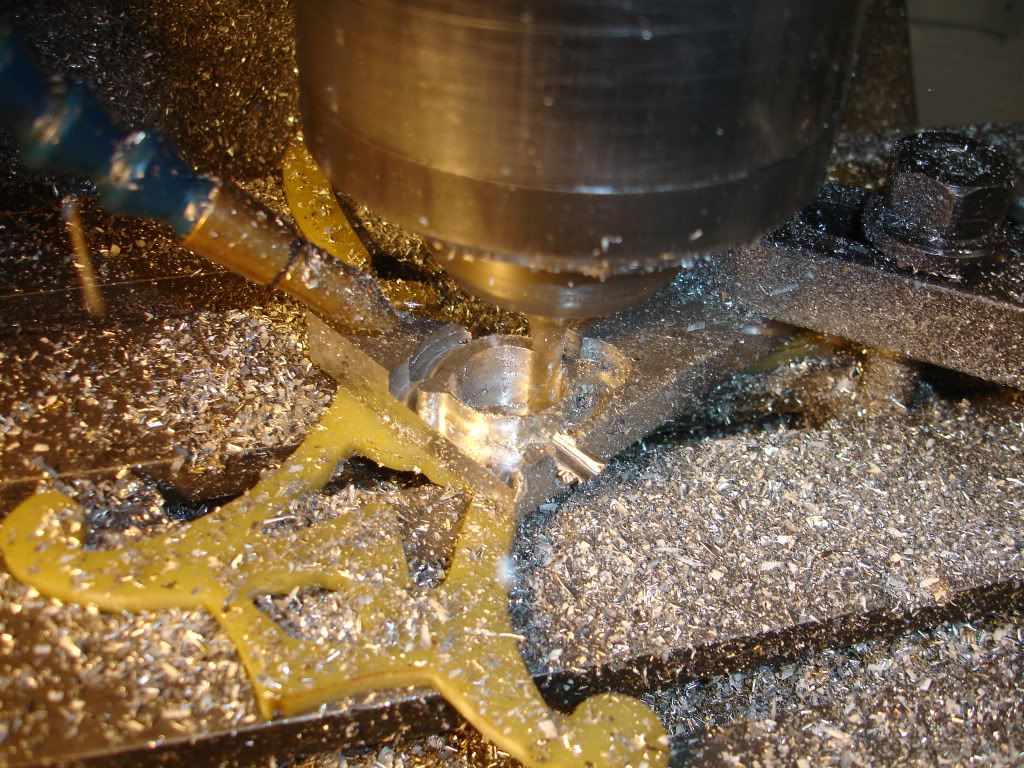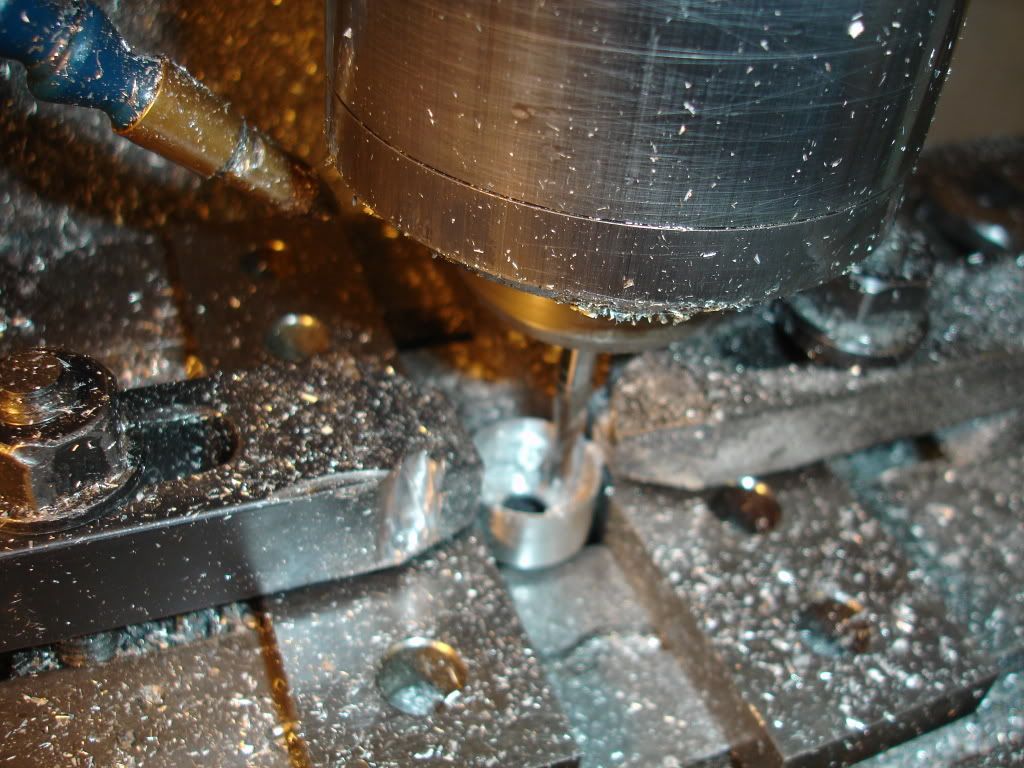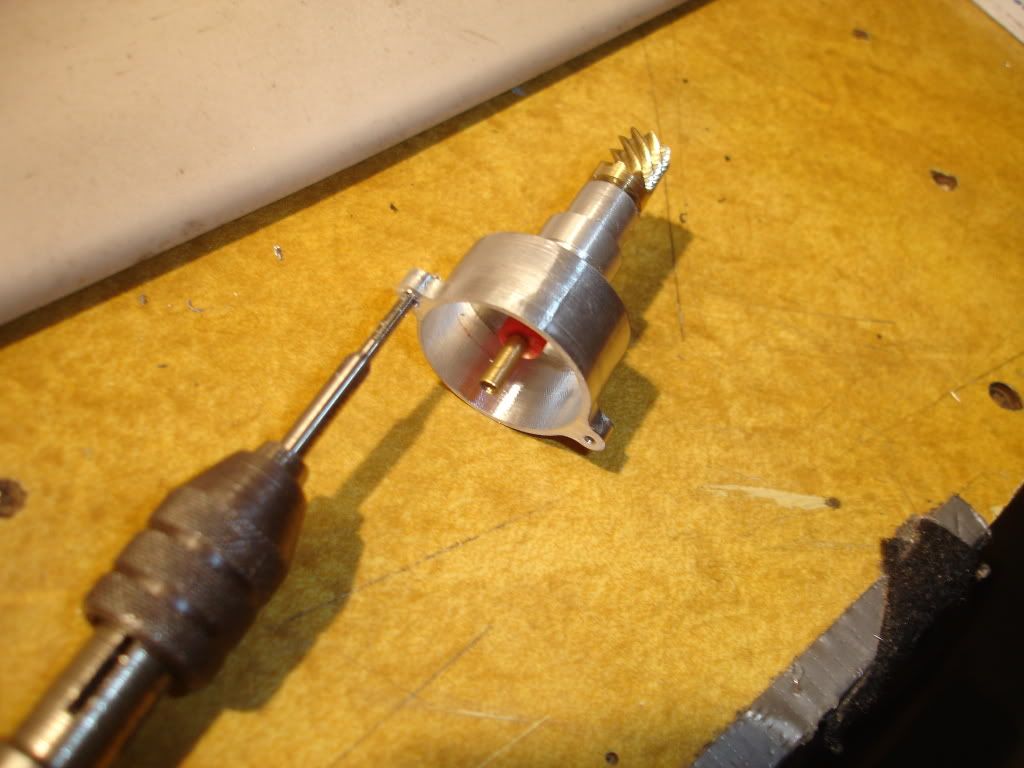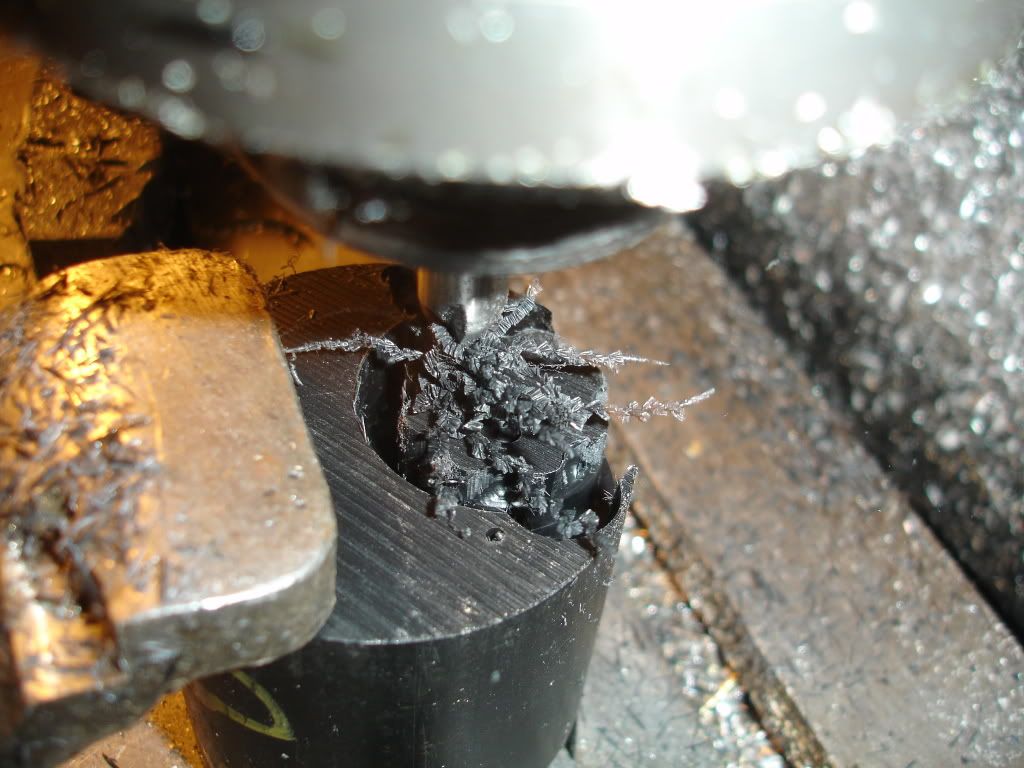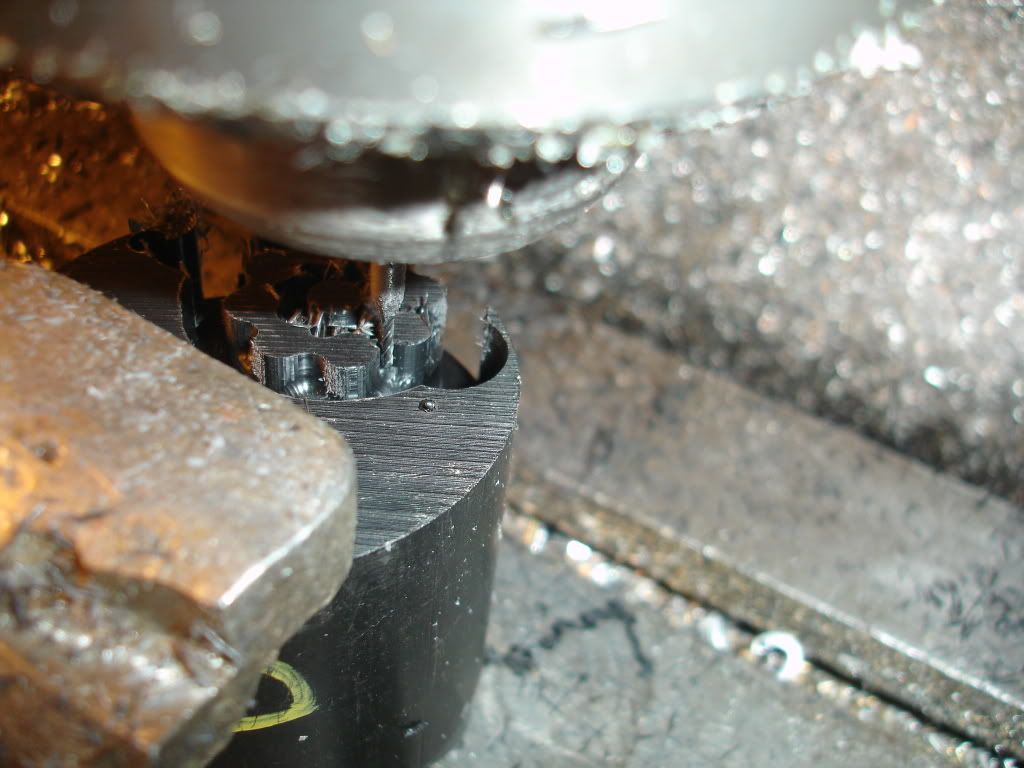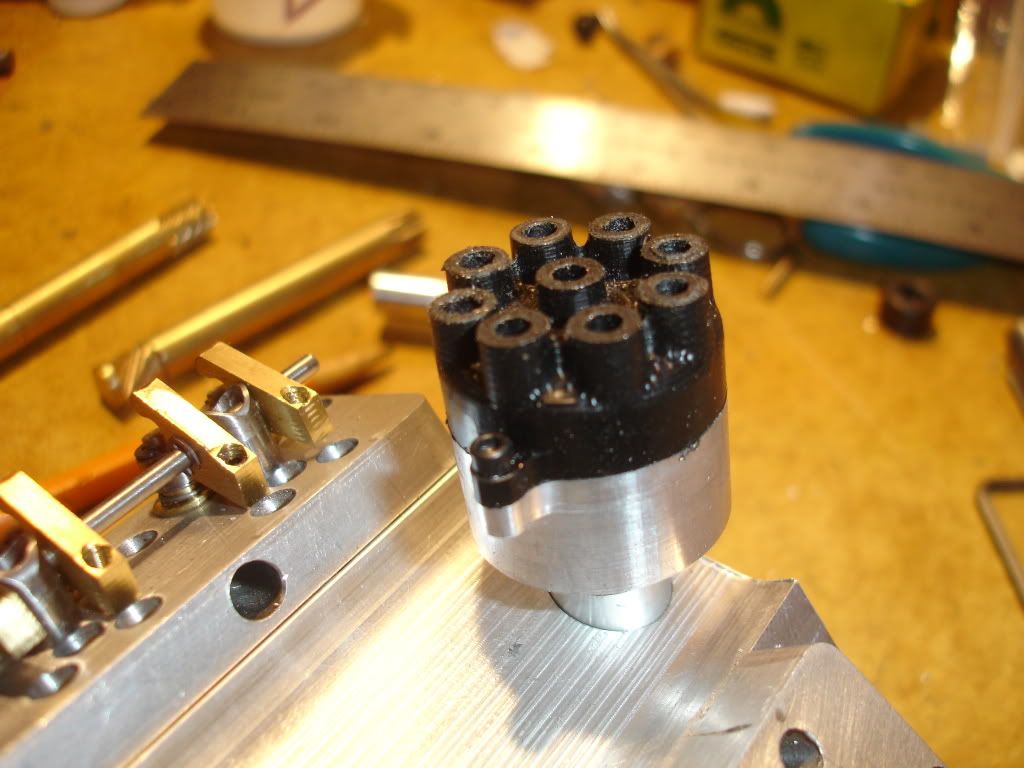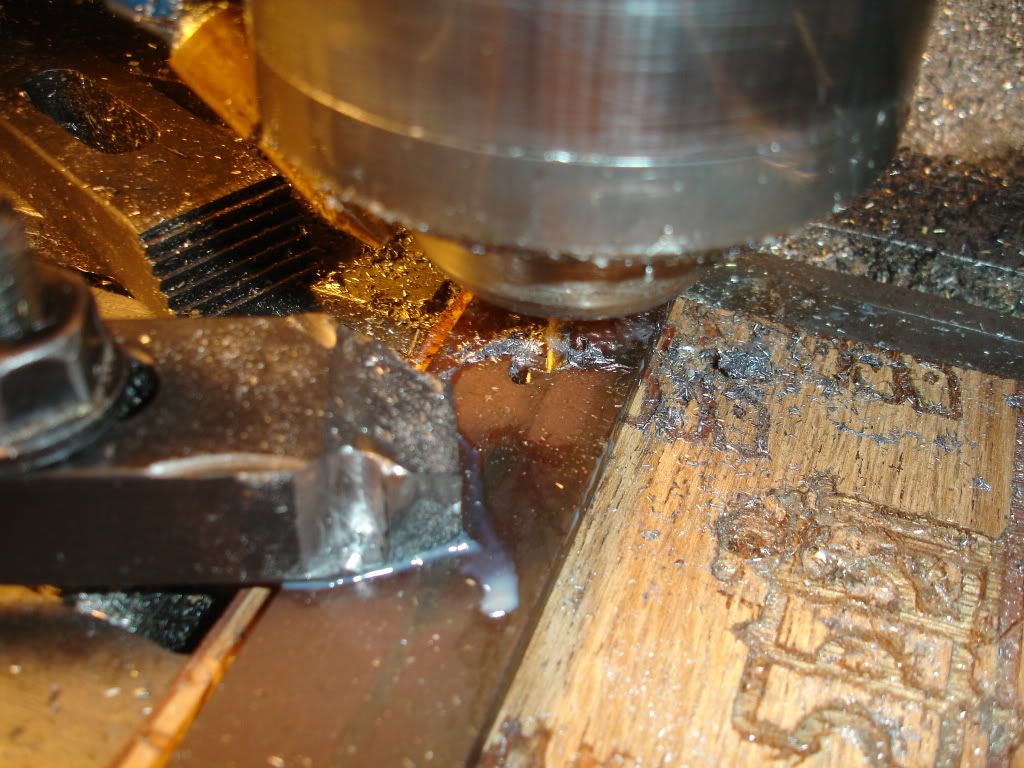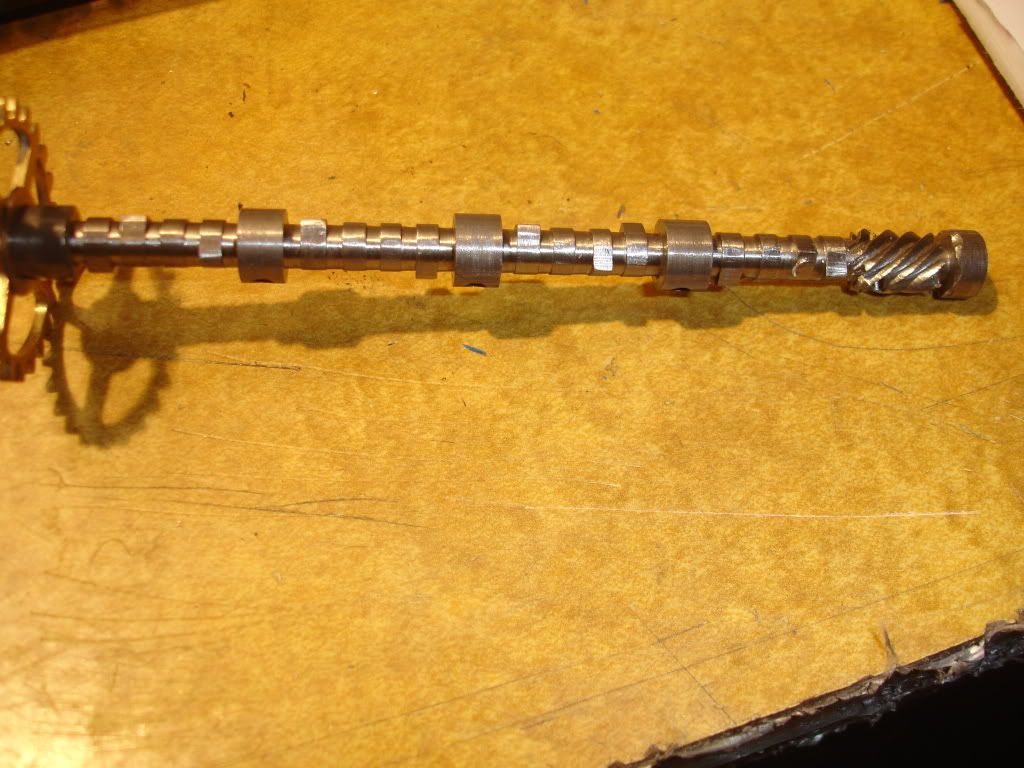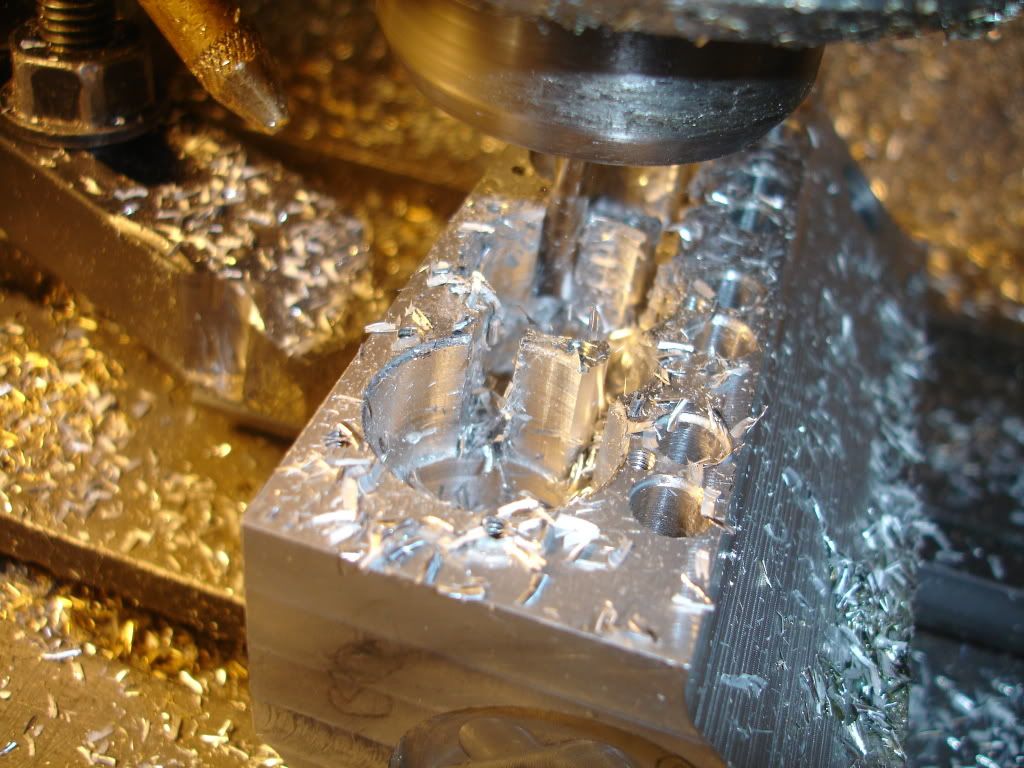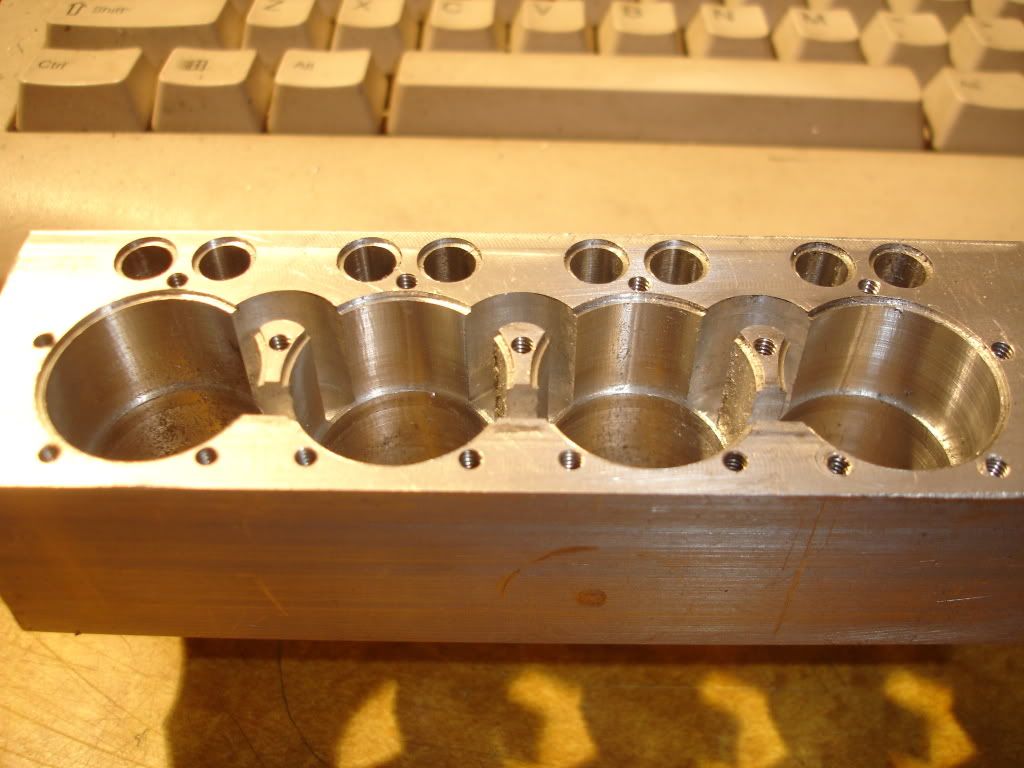If you're asking about the gear cut from 1/16 plate I rough cut first with a 1/8 end mill then followed up with a 1/16 end mill. I don't recall what I used on the spokes. The same sequence was used on the pinion.awJCKDup said:Jpeter, I was just looking at the pic of the timing gears being milled---What size endmill was Used?
Thanks John
For a long time was thinking of pocketing in from the side for the waterjacket, then putting a cover over the opening. Then, like what you're saying, I got thinking the water needs to be up near the top of the cylinder. Cutting in from the side below the head bolts would keep the jacket and water well below the top and not cool the cylinders up where they need to be cooled. I machined my sleeves with a 1/16 flange on top. I think I'll use half that, 1/32, for water space. My sleeves have 1/16 walls. I might turn half that away too. Between the two I'll have a 1/16 space for water. What do you think?Lakc said:I would think along the lines of how much water can you ultimately move, then figgure out how much space is needed to not impede the flow.
Full size practice of late only keeps water around the top 25% or so of the cylinder for iron liners in a aluminum block. At our scales, we need all that just for head bolt thread engagement. I would jacket the rest as deep as I dared, but most of the convection will be from liner--deck--coolant rather then liner--coolant.





